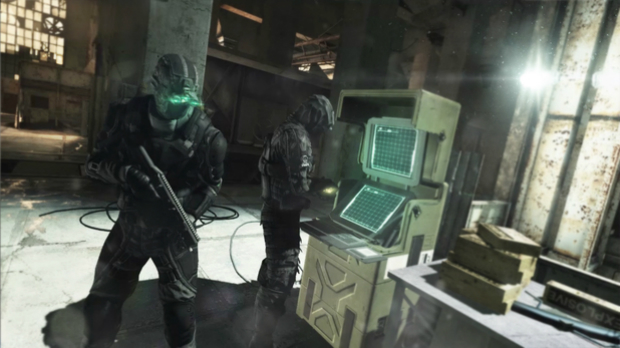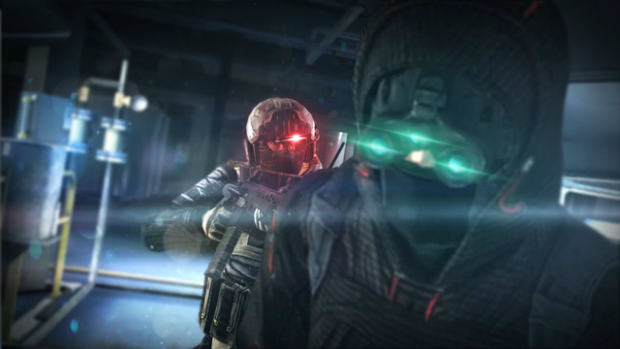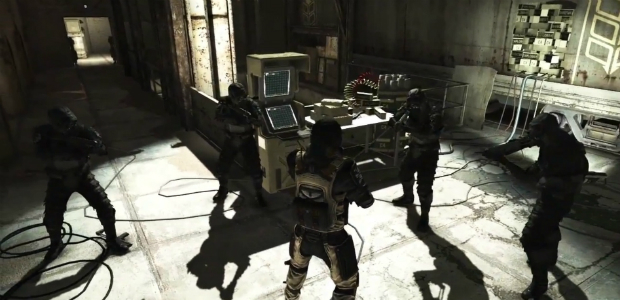Splinter Cell: Blacklist – Spies Vs. Mercs Preview – Force Vs. Finese
Deathmatch is a word that dominates the world of online multiplayer action. In the most famous and beloved examples, two teams of equals duke it out on a level playing field. It’s been the way of things since the early days of shooting virtual targets, and it always will be. More unconventional multiplayer is a rarity, but in the nine years since its debut in Splinter Cell: Pandora Tomorrow, Spies Vs. Mercs has established a cult following.
Later this month it returns revamped and reinvigorated with Ubisoft hoping the mode finds new popularity in the modern world of Call of Duty and Battlefield. In principal it’s a simple idea – third person perspective versus first, a greater fluidity of movement versus better accuracy, force versus finesse. Balanced multiplayer that pits different styles of gameplay is something gaming needs more of but how does this latest incarnation of Spies Vs. Mercs hold up?
There are two modes available in the new game. Taking its name from the title of this, the sixth Sam Fisher escapade, Blacklist introduces Call of Duty-like levelling and load-out customisation in games that pit four armed mercs against four unarmed spies. Classic mode casts aside all that and sees teams of two fight or slight their way to victory with set load-outs and equipment.
At Ubisoft’s preview event we played much more of Blacklist than Classic, which, while a little annoying, did give us a better chance of understanding the newer mode’s intricacies. Both sides provide three basic classes to choose from, with two that need to be purchased using cash won by performing well in games. There are slots for custom load-outs but here are the basics…

Spies
Intel Scout – Thermal vision, Intel suit (ability to tag enemies), EMP grenade
Predator – Sonar vision, Invisible Ghillie Suit, Smoke grenade
Saboteur – Electronic field vision, Overcharge suit (which cancels EMP tech), Flashbangs, Sticky Camera
Mercs
Peacekeeper – Motion tracker, Frag grenades, Adrenaline suit (increased visibility when you use adrenaline shot)
Hunter – Intel device (reveals nearby enemies), Gas grenades, UAV drone (remote controlled – explodes)
Disruptor – Faster aim/movement, Disruptor suit, Proximity mines
Each class has with it an important tool, and the best teams will seek to make sure they have them all at their disposal. Games focus on three terminals around the map that the mercenaries must protect as the spies attempt to hack. When a hack is initiated, an area around the terminal is marked out in which the hacker must keep hidden (and alive) to progress the hack until 100% completion. Each team gets to play both sides and are scored on the percentage that they managed to hack out of 300%. When games come down to the wire and every percentage mark counts, there is a giddy tension.
In one game we played our team had established a lead of 289%, just missing out on that final terminal in our turn as the spies. The opposing team started the next round strongly – smartly targeting the easiest terminal for the mercs to defend first. They succeeded in acquiring that terminal quite quickly but the second was much more of a fight. When the unseen enemy finally took down that one, the tension started to ramp up as all eight players ran for the final target. Whether by luck, or design, the last outpost was the one with least light. Lit mainly by the orange glow of a nearby fire, a bloodbath ensued. Seven of the players scuffled as the hacker remained out of sight. As they neared their target we became more rattled, more desperate and therefore easier for the defending spies to pick off. With 20 or so seconds remaining they past our 89% and sealed victory, eventually completing the terminal and completing a perfect round.

It was a great example of what the game can be, but it did present issues. With the benefit of being in the same room, and with proper gaming headsets on, we were much more at ease when it came to communication than many players would be online. Undeniably this would be a better experience with teammates, something which cannot be guaranteed in an online world dominated by screaming matriarch-insulting toddlers.
Another issue was in balance. Even after only a few games each of us had a clear class preference. The customisation options could remedy this with enough unlocks and enough experience to know what works, but of the three basics there were clear advantages to the Predator and Disruptor classes. Darkness is also a problem on occasion. Stealth games need to manage their use of lighting well but there’s a sense, in some areas, that it’s the spies with a clear advantage. On numerous occasions the players at the event tried to navigate a map while starring at a largely-black screen. In Classic mode flashlights return from the original versions of Spies Vs. Mercs, which, if included in Blacklist mode with a limited use-time or field of vision, could have balanced the game more nicely.
Classic mode is a much purer experience with no levelling, static load-outs and the simplest, and best, of equipment. The famous green-tinged night vision of Splinter Cell is only available to spies in Classic, while – as mentioned – mercs carry flashlights. 2 Vs. 2 also brings the pace of the game down considerably to something more in line with what you’d expect of game built on suspense and cunning.

Should Splinter Cell: Blacklist become a hit in the competitive gaming community, Classic Mode will clearly be the mode of choice. It may have fewer features but I prefer to think of it as less no-thrills and more no-frills. With only the basics there is a cleaner experience with less for players to wrap their heads around in the most pulsating moments. Classic mode may be the better of the two, but Ubisoft were wise to CoD-ify Spies Vs. Mercs for a newer generation of online gamers. Blacklist mode is certainly not without its benefits however, for one, I’d certainly like to see 4 versus 4 in classic mode further down the line. Further down the line? Well yes, Splinter Cell’s online game of cat and mouse has won me over once again, and you’ll be seeing me, or rather you won’t be seeing me, online come later this month when the game is finally released.




